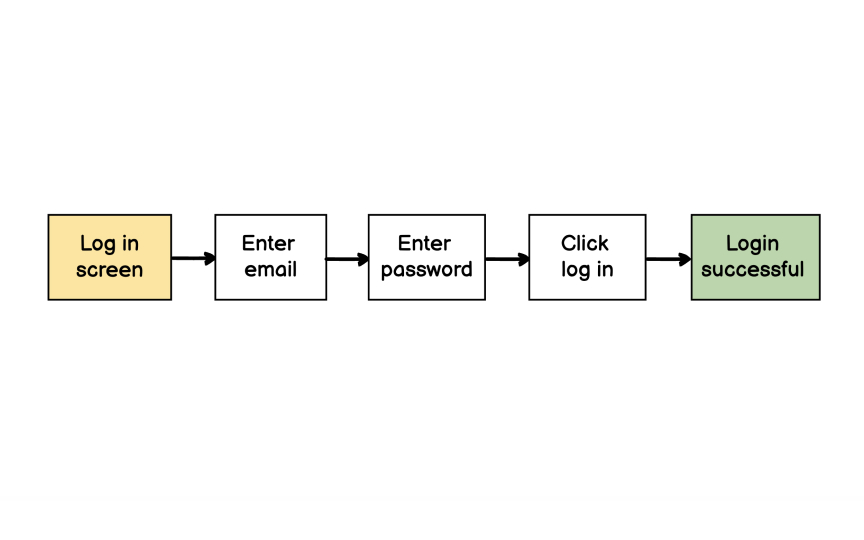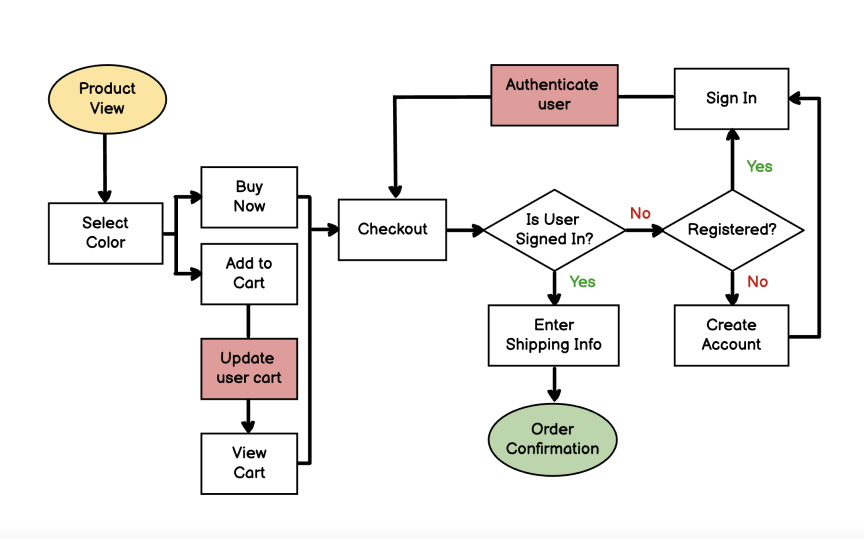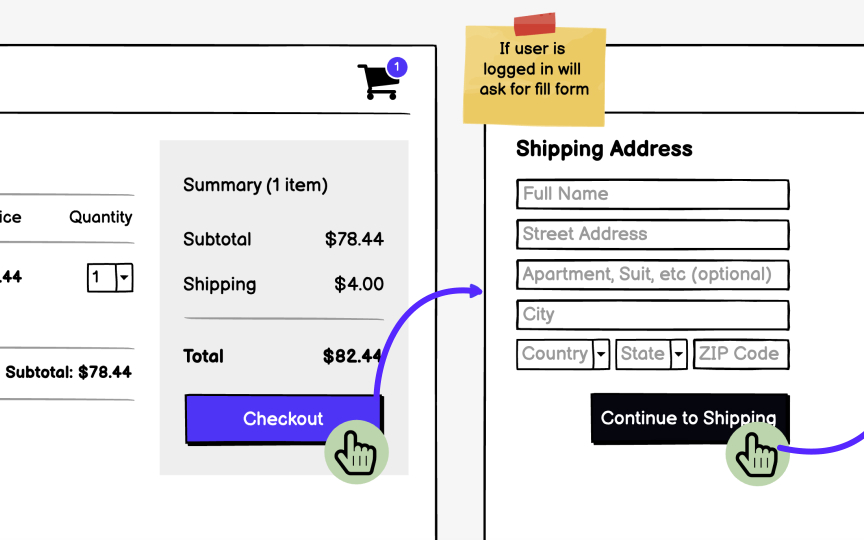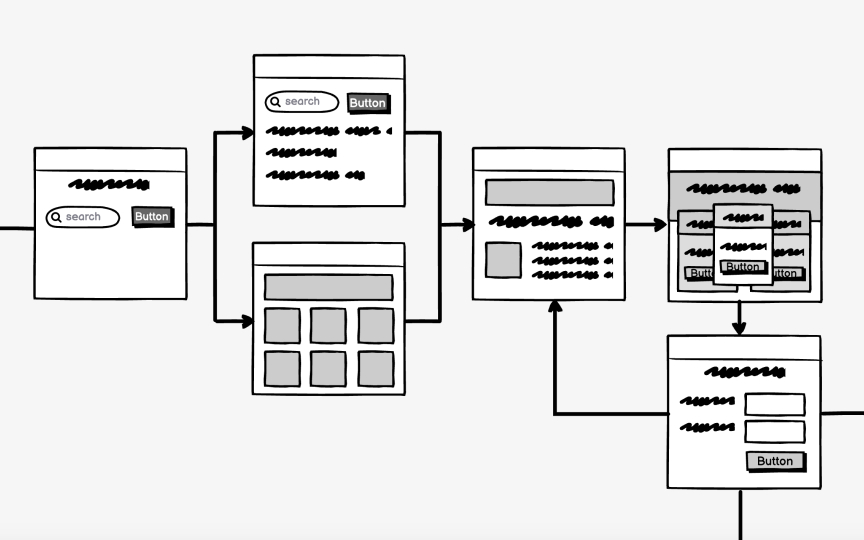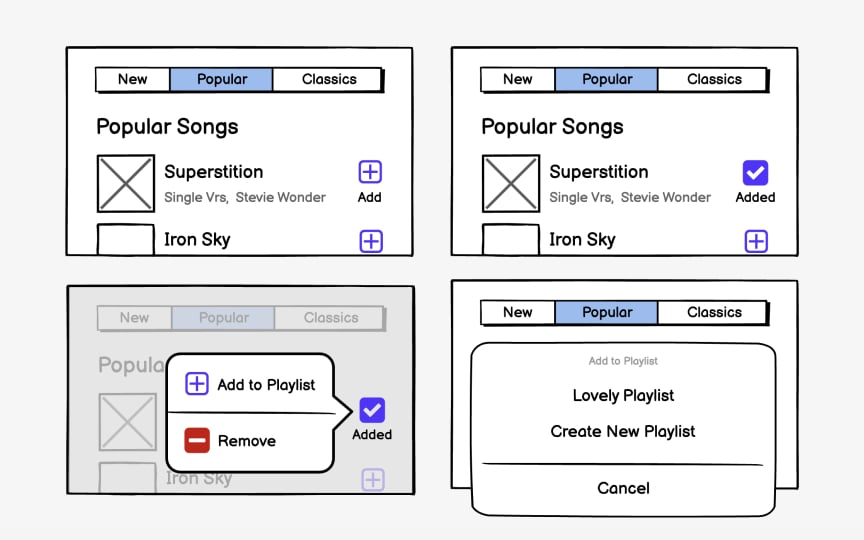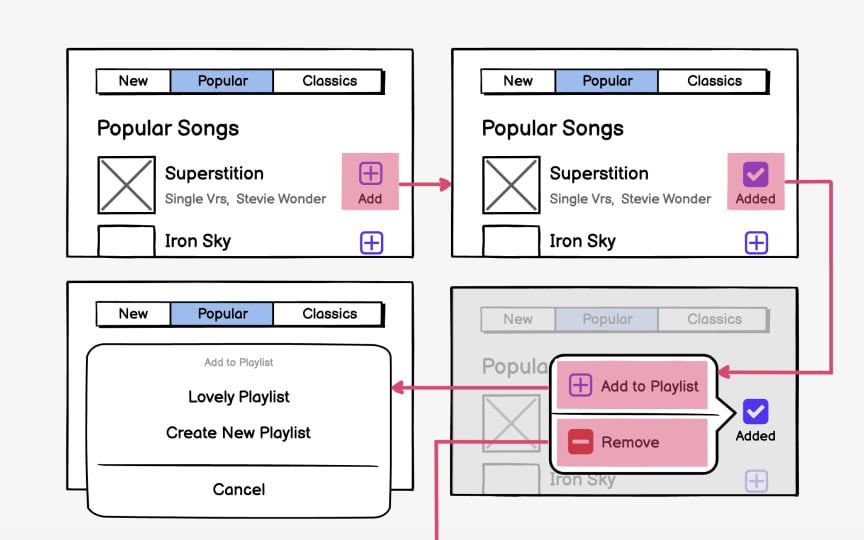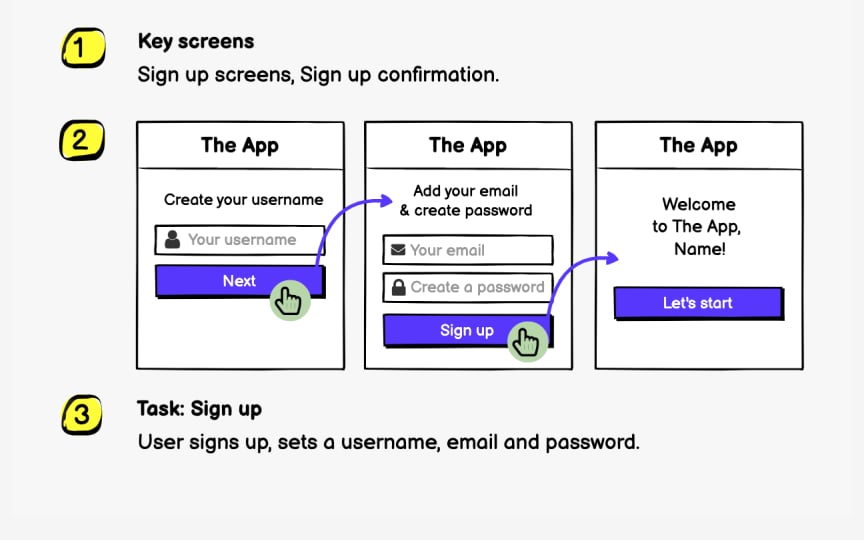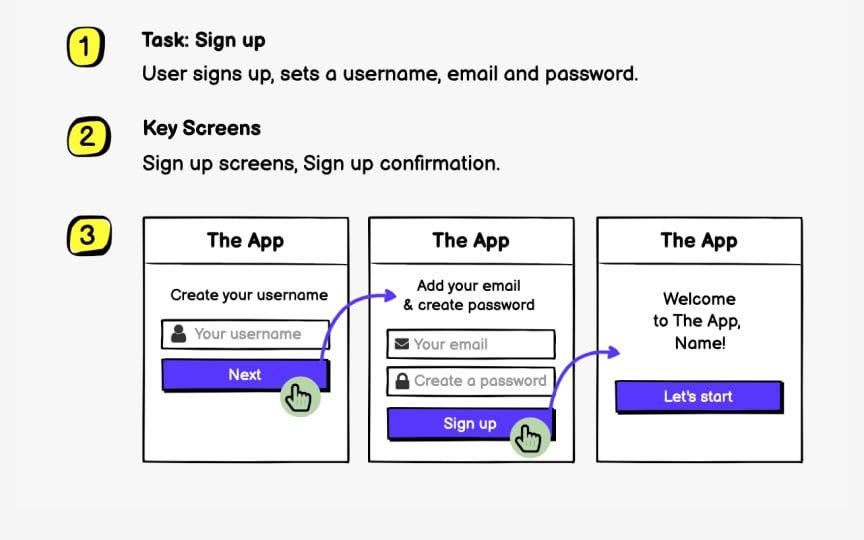What are Wireflows?
Explore how to visually depict user journeys through wireflows and inform design decisions for intuitive and seamless user experiences
Task flows, user flows, and flowcharts — these terms describe diagrams designers use to document user interactions and show directional flow and decision-based logic. What differentiates task flows from flowcharts is the level of detail and processes they include, and the term "user flow" is often used interchangeably with both task flows and flowcharts.
However, product designers have been using hybrid methods for wireframing for a long time. We're talking about wireflows — a series of wireframes connected to document a user flow. The type of diagram you want to use for a specific user flow depends on the type of app you are designing — specifically, how many unique pages it has or if the page's content dynamically changes based on user interaction.
A task flow is a diagram that shows a linear sequence of steps that illustrate how a user will complete a particular task — for example, a login task flow. Task flows use plain and natural language and don't show any design. They also don't usually explore deviations from the ideal path — for example, if a user forgets their password.
Task flows are useful in planning optimal paths for task completion. One way to create task flows is to conduct task analysis to observe how users perform their tasks and achieve their intended goals.[1]
Because of their nature, flowcharts allow us to document the user and system flows more thoroughly, showing the branching of paths at decision points and how data flows through the system. They're excellent for representing the product's complexity, but the downside they share with task flows is that they don't show any UI design.
The term 'wireflow' comes from the combination of words 'wireframe' and 'flowchart,' coined by Nielsen Norman Group.[2] As the name suggests,
Wireflows show visual
Wireflows are particularly useful when documenting mobile, desktop, or web apps that don't have many unique
Simplified
In the example, you can see a simplified purchase flow that starts with users searching for the item on the home
The classic use case for
Simple wireframes show the screens available to users at each step in the workflow. Arrows connect specific UI components that users interact with — for example, tap a button or a link — with wireframes that show what happens as a result of the
You can also use wireflows to document complex workflows of desktop and web apps. No need to show a full-screen
Can you use wireflows for documenting task flows in traditional static websites? It works for mobile but might not be the best idea when it comes to desktop websites — when wireframes show different big pages, it's easy to lose the context of the
Let's look at the steps of the
- Describe the need and problem in a user story. For example, user signup — setting the username, email, and
password . - Identify the key screens in the interface. A good way to approach this is to think in terms of starting and ending points. For example, the starting point is the
login page , and the ending point is the welcome modal. - Connect the screens with arrows in the order users would move forward. You can also include decision points and show what happens in different cases — for example, if a user forgets their password.[3]
References
- Wireflows: A UX Deliverable for Workflows and Apps | Nielsen Norman Group
Top contributors
Topics
From Course
Share
Similar lessons

Intro to Wireframing

Wireframe Fidelity

